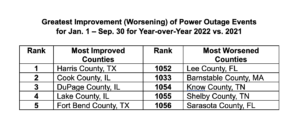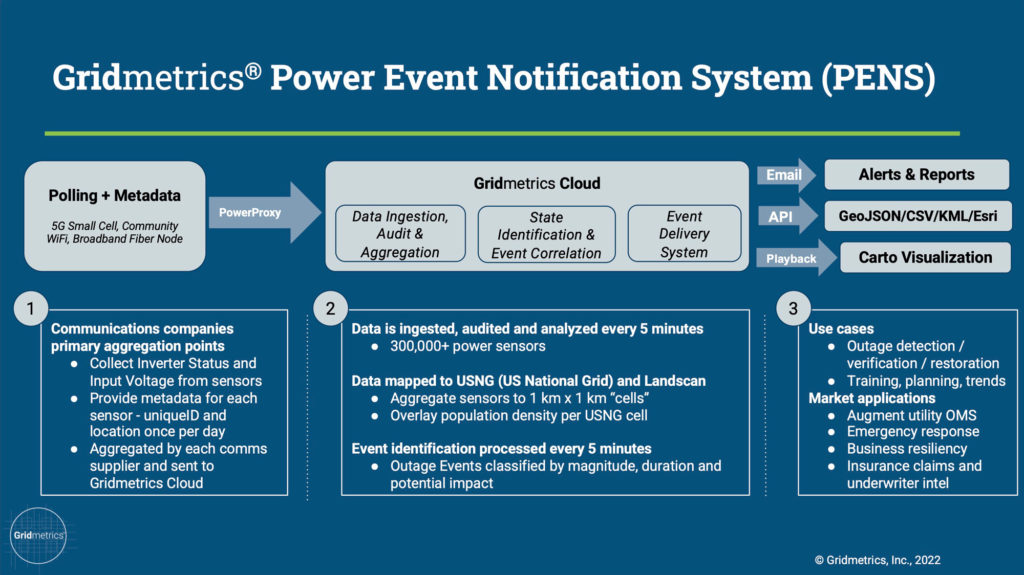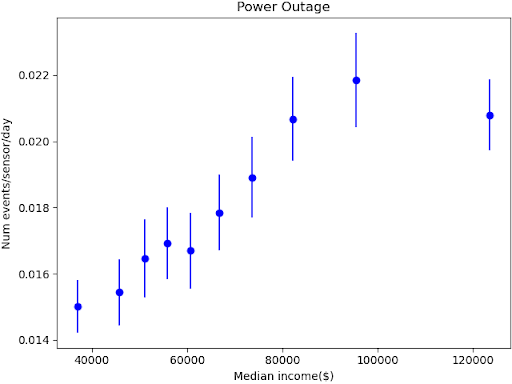
Gridmetrics can help the DOE ensure the nation’s grid is secure and resilient to disruptions by providing live and historical data on everyday power quality.
This data can be used to identify areas where the grid needs to be strengthened in order to withstand natural stressors, such as heat, cold, wind, and flooding.
Another aspect of DOE’s mission is to promote energy equity. Gridmetrics’ data can contribute to this initiative by providing and analyzing different geographical regions to see to what extent there exist differences of power resilience for different income levels and racial/ethnic groups.
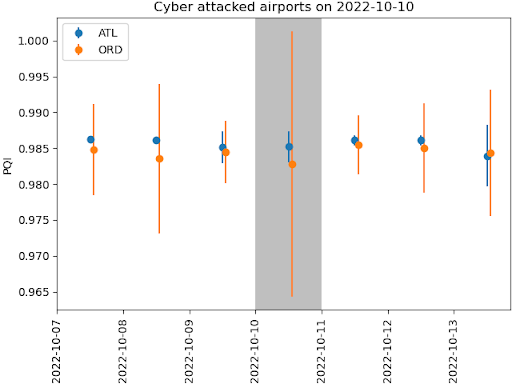
Cyber attacks on critical energy infrastructure may include efforts to mask the attack in order to thwart timely detection, fault location, and remediation.
Grid Metrics can provide independent, out-of-band, and battery-backed insight into the actual power conditions, which is essential to appropriate detection and restoration following attack.
For example, the chart to the right shows the daily Power Quality Index for Atlanta Hartsfield (ATL, 32 sensors) and Chicago O’Hare (ORD, 53 sensors) airports, plus or minus three days from the 2022-10-10 cyberattack.
The sensors used were within 10 miles of the airport latitude and longitude given by a Google search of the airport. Although this attack appears to be confined to a denial-of-service attack, we can nevertheless see if there are any additional insights from Gridmetrics’ datasets. One unusual feature which stands out is the level of fluctuations at ORD on the day of the attack. There appeared to be no unusual weather during that day, so a signal like this could be worthy of further investigation. More refined data looking at power quality down to the five-minute level might reveal further insights whether this is due to a “normal” power anomaly or possible mischief.
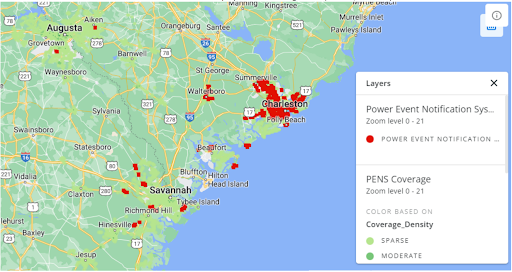
Gridmetrics reports are available down to the 5-minute level and thus provide a near real-time view of power outages during extreme weather events. This capability can provide FEMA with precise locations where emergency resources are needed.
An application of Gridmetrics historical data can be used in planning and recommending where critical resources might be susceptible to power outages and other power-related anomalies.
Similar to FEMA’s use case, state-level emergency management services can use Gridmetrics near real-time data to allocate resources where they are most needed during an emergency. Also, Gridmetrics historical data can be used in planning and approval processes so that housing and businesses are able to operate properly.
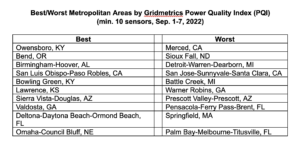
Again, similar to FEMA’s use case, local governments can use Gridmetrics for immediate response actions as well as planning. This table shows the best and worst metropolitan areas in the US for the month of September 2022. These results could extend to any timeframe and restricted to a particular state.
There are many diverse business applications to Gridmetrics data and customized reports. Such tailored reports enable decision-makers to consider a more comprehensive assessment of a critical aspect to their business heretofore unavailable.





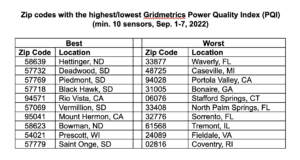 Until now real estate agents have not been able to provide prospective clients with accurate information about the electrical power in the area.
Until now real estate agents have not been able to provide prospective clients with accurate information about the electrical power in the area. 
